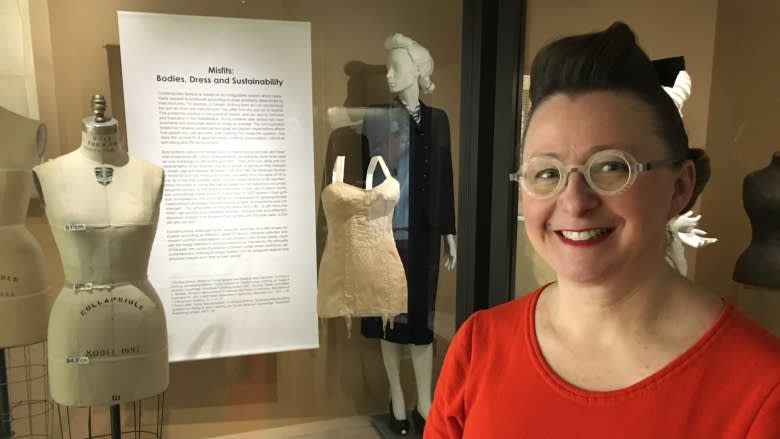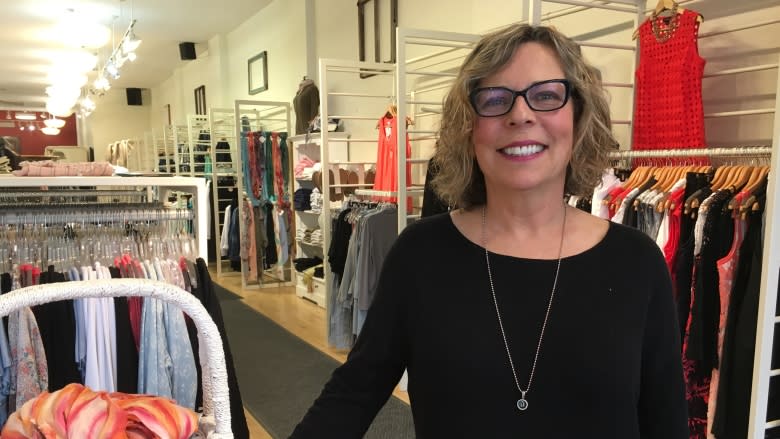'Chaos': When it comes to women's clothes, that's about the size of it, fashion expert says
Clothes shopping can be frustrating for many women, but they should blame the industry instead themselves, says a University of Alberta fashion expert.
The problem is, there are no universal size standards from one manufacturer to the next, said Anne Bissonnette, a material culture professor in the faculty of agricultural, life, and environmental science. Clothing is made all over the world, and the size of the models, on which clothing is based, can vary drastically from one country to another.
"There is no two size 10s alike," Bissonnette said. "It's all over the map.
'Inches shouldn't change'
Bethany Kaposhi admits that shopping can be painful. While her body type is easier to fit "off the rack," she said sizes don't make sense.
"I'm a 26 in one pair of jeans and I'm a 29 in another, and that's supposed to be inches," she said. "And inches shouldn't change."
Men have a choice of short, regular and tall options and a specific dimension for waist size that under Canadian law must be accurate, said Bissonnette.
Sizes for women, on the other hand, are "chaos," she said.
Bissonnette and her students have put together a new exhibit called "Misfits: Bodies, Dress and Sustainability," which is on display in the lobby of the Human Ecology building at the University of Alberta.
The exhibit points out the inconsistencies in the present system and challenges sizing standards, which were patterned on measurements developed nearly 80 years ago that still influence clothing today, said Bissonnette.
At that time, it was common for women to wear girdles that diminished their hips, tummy, and buttocks, she said.
Sizes are 'grossly inaccurate'
"It is a real problem trying to fit clothing for women these days," said Jane Harrick, owner of Avenue Clothing Co. on Whyte Avenue. "It is grossly inaccurate."
The problem is that many people want more for less, said Harrick, something she calls a "Costco mentality."
Manufacturers are cutting costs and not paying attention to details, such as properly created patterns that take into account more room in the hips or chest for larger sizes, she said.
Clothing manufacturers should scrap the old sizing system and tap into current technology, such as 3-D body scanners, to gain a better understanding of how bodies occupy space, Bissonnette said.
"We can send people to the moon, we can figure out this problem."
Bissonnette thinks women would be loyal to a manufacturer that creates garments that actually fit.
"Do I have three hours to find things and try things on, and feel like crap? Probably not. I'll go to this manufacturer that offers me an efficient option."
Yoga pants are a case in point, she said. "The reason they are so popular is they are adaptable to your body."
She created exactly that kind of dress in honour of the exhibit, describing her style as a "buffet dress."
"You can go and do an all-you-can-eat buffet and you still look good, and it still fits," Bissonnette said
In the future, she would like to see more garments that adapt to a person's shape over a year or several years, allowing people to keep them longer.
"What is sustainability in fashion? It's not just the material. Less would go into the landfill as a result."



